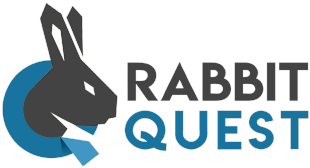Beyond the workshop: Elevating employee well-being with actionable vitality programs
Wellness workshops have become a go-to solution for many organizations looking to promote employee well-being. While these workshops can provide valuable information and tools, relying on them alone may not be enough to drive long-lasting changes in employees' health and vitality. In this blog, we'll discuss the perfect follow-up of wellness workshops and explore ways to create a more comprehensive vitality program that goes beyond just information-sharing.
Time to read: 5 minutes
1. Follow-up and implementation
One of the primary drawbacks of wellness workshops is that they often focus on providing information without ensuring employees have the necessary support and resources to implement the strategies they've learned. Without proper follow-up and reinforcement, employees may quickly forget the material or struggle to put it into practice. A beautiful deep dive into information vs. activity is here.
2. Time constraints
Workshops typically last for a few hours, which may not be sufficient for employees to fully grasp and internalize the concepts and strategies presented. Furthermore, scheduling conflicts or time constraints may prevent some employees from attending workshops, limiting their access to crucial wellness information.
3. One-size-fits-all approach
Wellness workshops often present general information and strategies that may not suit the unique needs, preferences, and circumstances of each employee. This one-size-fits-all approach can lead to disengagement or a lack of motivation to apply the information to their personal well-being journey.
4. Limited scope
Workshops usually focus on a specific topic, such as stress management or nutrition, potentially neglecting other crucial aspects of employee well-being. A more comprehensive approach to vitality programs should address the multiple dimensions of wellness, including physical, mental, emotional, and social health.
5. Inconsistent messaging and support
Relying solely on occasional workshops may lead to inconsistent messaging and support around employee well-being. To truly foster a culture of health and vitality, organizations must provide ongoing resources and reinforcement of wellness principles.
So how do you then implement a phenomenal follow-up?
To create a more effective vitality program, consider incorporating the following strategies:
1. Provide ongoing support and resources
Offer continuous support and resources for employees, such as regular check-ins, access to counseling services, or online platforms with wellness content. This ongoing reinforcement helps to ensure employees can effectively implement and sustain the strategies they've learned.
2. Encourage personalized goal setting
Empower employees to set their own wellness goals that align with their unique needs and circumstances. Provide tools and resources to support employees in tracking their progress and adjusting their goals as needed.
3. Offer a variety of activities and formats
Offer wellness activities and resources in various formats, such as group fitness classes, one-on-one coaching sessions, or self-guided online resources, to cater to diverse preferences and learning styles.
4. Foster a supportive workplace culture
Cultivate a workplace culture that values and prioritizes employee well-being. Encourage open communication, peer support, and recognition of individual achievements in the realm of health and wellness.
5. Address all dimensions of wellness
Ensure your vitality program encompasses the multiple dimensions of wellness, including physical, mental, emotional, and social health. This comprehensive approach will help employees achieve a well-rounded sense of well-being. By recognizing the limitations of wellness workshops and developing a more comprehensive and holistic vitality program, organizations can better support employees in their pursuit of long-lasting health and well-being, ultimately leading to a happier, more productive workforce.




